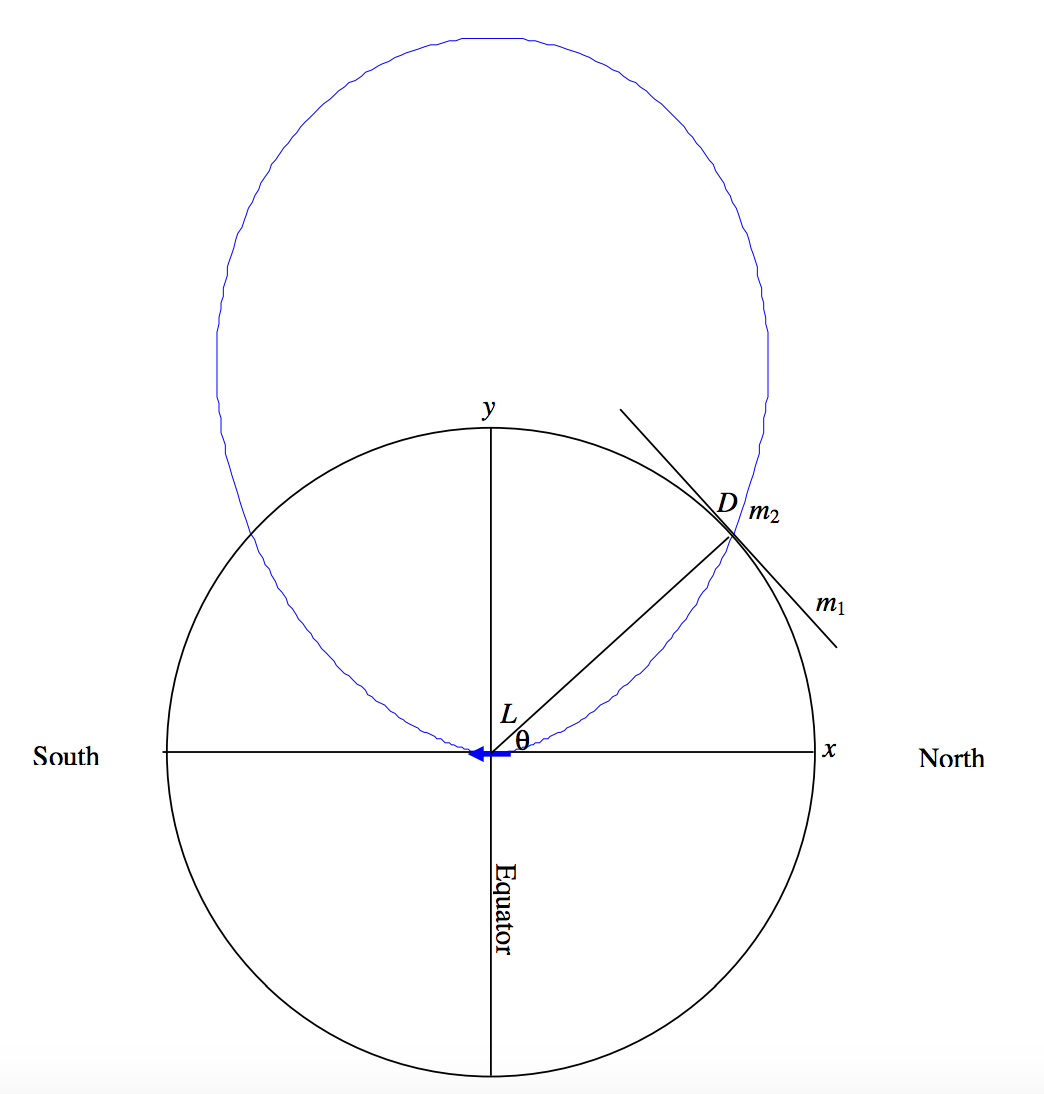3.10: A Geophysical Example
( \newcommand{\kernel}{\mathrm{null}\,}\)
Assume that planet Earth is spherical and that it has a little magnet or current loop at its centre. By “little” I mean small compared with the radius of the Earth. Suppose that, at a large distance from the magnet or current loop the geometry of the magnetic field is the same as that of an electric field at a large distance from a simple dipole. That is to say, the equation to the lines of force is
r=asin2θ
and the differential equation to the lines of force is
drdθ=2rtanθ
Show that the angle of dip D at geomagnetic latitude L is given by
tanD=2tanL
The geometry is shown in Figure III.16.
The result is a simple one, and there is probably a simpler way of getting it than the one I tried. Let me know (jtatum@uvic.ca) if you find a simpler way. In the meantime, here is my solution.
I am going to try to find the slope m1 of the tangent to Earth (i.e. of the horizon) and the slope m2 of the line of force. Then the angle D between them will be given by the equation (which I am hoping is well known from coordinate geometry!)
tanD=m1−m21+m1m2.
The first is easy:
m1=tan(90∘+θ)=−1tanθ
For m2 we want to find the slope of the line of force, whose equation is given in polar coordinates. So, how do you find the slope of a curve whose equation is given in polar coordinates? We can do it like this:
x=rcosθ,y=rsinθ,dx=cosθdr−rsinθdθ,dy=sinθdr+rcosθdθ.
From these, we obtain
dydx=sinθdrdθ+rcosθcosθdrdθ−rsinθ.
In our particular case, we have drdθ=2rtanθ (equation 3.7.12), so if we substitute this into Equation ??? we soon obtain
m2=3sinθcosθ3cos2θ−1.
Now put Equations ??? and ??? into equation 3.10.2, and, after a little algebra, we soon obtain
tanD=2tanθ=2tanL.

Here is another question. The magnetic field is generally given the symbol B. Show that the strength of the magnetic field B(L) at geomagnetic latitude L is given by
B(L)=B(0)√1+3sin2L,
where B(0) is the strength of the field at the equator. This means that it is twice as strong at the magnetic poles as at the equator.
Start with equation 3.7.2, which gives the electric field at a distant point on the equator of an electric dipole. That equation was E=p4πϵ0y3. In this case we are dealing with a magnetic field and a magnetic dipole, so we’ll replace the electric field E with a magnetic field B. Also p/(4πϵ0) is a combination of electrical quantities, and since we are interested only in the geometry (i.e. on how B varies from equation to pole, let’s just write p/(4πϵ0) as k. And we’ll take the radius of Earth to be R, so that equation 3.7.2 gives for the magnetic field at the surface of Earth on the equator as
B(0)=kR3.
In a similar vein, equations 3.7.10 for the radial and transverse components of the field at geomagnetic latitude L (which is 90º − θ) become
Br(L)=2ksinLR3andBθ(L)=kcosLR3.
And since B=√B2r+B2θ the result immediately follows.


